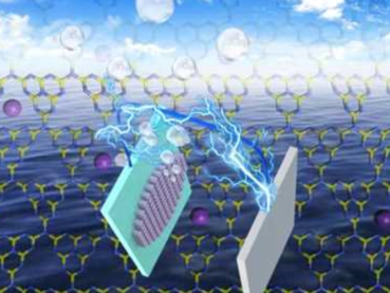Graphitic carbon nitride (CN) is a promising photocatalyst for water splitting. However, improvements in film quality and surface engineering are still needed for its use in photoelectrochemical applications.
Jian Liu, Qingdao University of Science and Technology, China, and colleagues have prepared a functional CN thin film on a conductive fluorine-doped tin oxide (FTO) electrode. The team used a microprinting-based direct-growth method with cyanamide as the “ink” and anodic aluminum oxide as a “stamp” to apply the CN precursor to an FTO substrate. The cyanamide condensates to form CN. The prepared CN@FTO electrode was then treated with Co(NO3)2·2 H2O to incorporate Co in the material.
The researchers found that the cobalt species as a modifier significantly enhanced the photoelectrochemical performance compared with pure CN@FTO films. The anodic photocurrent was doubled and the overpotential for water oxidation was reduced from 0.32 to 0.04 V. This is due to a reduced charge transport resistance. According to the researchers, the developed approach is versatile and can be further optimized by selecting other “inks” and modifiers on various conductive substrates.
- Surface Engineering of Carbon Nitride Electrode by Molecular Cobalt Species and Their Photoelectrochemical Application,
Zupeng Chen, Hongqiang Wang, Jingsan Xu, Jian Liu,
Chem. Asian J. 2018.
https://doi.org/10.1002/asia.201800487


